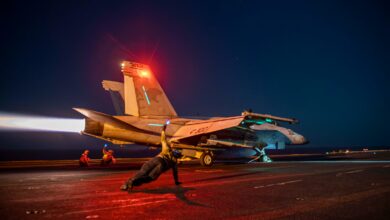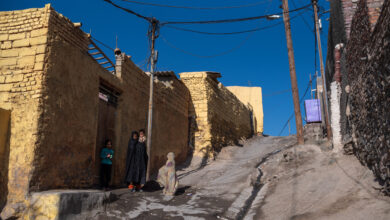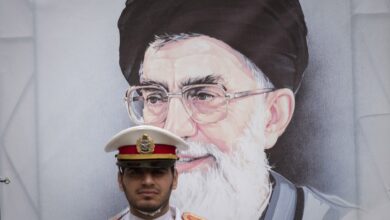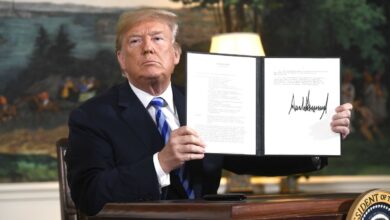A war over water: Fall of Farah exposes a new proxy front in Afghanistan’s conflict
Besides exposing the vulnerabilities of the nascent Afghan security forces, the swift, but brief fall of Farah city to the Taliban in Afghanistan’s west border with Iran has unveiled a new proxy front in this raging war.
On a pleasant summer night last week, groups of heavily armed Taliban fighters numbering in the hundreds stormed the heavily guarded Farah city, capital of the province of the same name, causing death and destruction for hours until Afghan Special Forces backed by U.S. air power came to the rescue.
The death toll in the May 15 attack, confirmed by officials, is relatively low – around 20 – but the storming of Farah was a major achievement for the Taliban, who have carried out close to 3,000 attacks in the weeks since their spring offensive, ‘al-Khandaq,’ began.
Jamila Amany, a female member of the provincial assembly, told The Defense Post of the horror she experienced: “They [Taliban] were in very large number, and they were shooting indiscriminately at the police headquarters, the main prison and other security installations from the rooftops of civilians’ home which they used as shields. It was horrendous.”
Afghan officials have long been pointing fingers at Iran for getting its hands dirty with alleged backing for the Taliban, but Tehran has always rebuffed these remarks as baseless allegations. The Iranian envoy to Afghanistan, Mohammad Reza Bahrami, said in a recent interview with a local broadcaster that “Iran’s contacts with the Taliban aim to help and support the Afghanistan peace and reconciliation processes.”
Bordering Iran, Farah province shares borders with restive Helmand and Nimroz provinces, and according to local media many Taliban behind the surge in fighting have arrived from Helmand due to the intensive security operation there.
The prospect of Iran’s greater involvement in the Afghan crisis to the extent that Tehran could help the Taliban enter a major city such as Farah has sent shockwaves across the war-weary country.
“We have invited top security officials to brief the parliament if it is true (Iran’s involvement), and since we share long border with Iran and if such allegations are true than Iran can be another ‘Pakistan’ for us,” Nisar Ahmad, a member of the Wolesi Jirga (lower house of the parliament) told Azadi Radio.
Afghan and NATO officials have long accused Pakistan of harboring, training and equipping the Taliban and other terrorist groups staging attacks in Afghanistan. U.S. Secretary of State Mike Pompeo this week said bluntly that Iran indeed is supporting the Taliban with weapons and funding, leading to further violence.
“Iran, too, must end support for the Taliban and other terrorists in Afghanistan and the region, and cease harboring senior al-Qaeda leaders,” Pompeo said at the Heritage Foundation, a Washington-based think-tank.
The war over control of water
In a rare outcry, Iranian President Hassan Rouhani publicly criticized Afghanistan’s dam development project at a conference on sandstorms in Tehran last year. “We cannot remain silent about the thing which is apparently damaging our environment. Establishment of several dams in Afghanistan such as Kajaki, Kamal Khan and Salma in the north and south of Afghanistan threatens a number of bordering provinces in Iran.”
Syed Muntazer, an expert on natural resources in Afghanistan, told The Defense Post that the recent surge in violence in the border areas is directly linked to these concerns raised by president Rouhani.
“You see, on average basis, up to 80 percent of our around 70 billion cubic meters of water are flowing to Iran, Pakistan and the Central Asian countries. Iran is one of the neighbors which receives much water from Afghanistan’s two water zones, Helmand and Harirrod,” he said
These apprehensions were echoed in the remarks of the defense minister, Lieutenant General Tariq Shah Bahrami, who dubbed the war in Farah as “a war over water.”
“War in Afghanistan has big dimensions. This is not the Afghanistan people’s war only. There are over 20 terrorist groups in the region and I want to say bluntly that they are supported by two neighbors of ours with all resources. They have other regional partners too,” he said during a press conference in Farah.
Iran is seen to recognize the western part of Afghanistan, especially Herat province, as its ‘area of influence’ in which Tehran identifies development activities, such as the building of dams, as a competition rather than an area for cooperation.
Siegfried O. Wolf, director of research at the Brussels-based South Asia Democratic Forum, agrees. He told The Defense Post that Iranian claims to the India-Afghanistan Friendship Dam in Herat as well as other water management and irrigation projects in Afghanistan (such as in the Helmand and Harirod-Murghab river basins) are blamed for negative environmental impacts in Iran.
“There is a tremendous increase of activity by Iran in Afghanistan since several years. However, there is also an increasingly changing perception among the Afghans about Iran’s role in their country,” Wolf said.
“It becomes more obvious that Teheran’s development projects in Afghanistan are mainly serving Iranian economic interests as well as to gain political leverage. Furthermore, it also becomes more and more apparent that Iran is engaged in deconstructive activities, like the production and trade of drugs conducted by the the Islamic Revolutionary Guard Corps,” he said, adding that the IRGC is closely involved in Iran’s collaboration with the Taliban.












